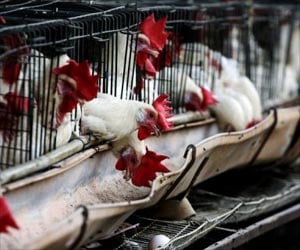
Places potentially at risk include urban centres on the coast of east and southeast China where H7N9 has not been reported; parts of the Bengal regions of Bangladesh and India; Vietnam's Red River and Mekong deltas; and isolated areas of Indonesia and the Philippines.
A map published in the journal Nature Communications, seeks to provide watchdogs with a tool to identify H7N9's possible flare points.
H7N9 is the second bird virus alongside H5N1 to have emerged in recent years through live markets, where traders and shoppers come in close contact with infected chickens and ducks.
H5N1 is far more dangerous for humans than H7N9 but its spread through birds is more easily detectable, as poultry usually show signs of being sick from it.
H7N9 can be asymptomatic in birds, meaning the animals may show no sign of illness.
Advertisement
It "may spread beyond the distribution indicated by the human cases which have thus far been reported."
Advertisement
Looking at the evidence from northeastern China, where chicken production is intensive, the researchers said industrial-scale farms were unlikely to have played a significant role in spreading H7N9 there.
This backs previous research that smaller farms, where domestic fowl are likelier to come into contact with wild birds, and trading in infected poultry at local markets were major channels for spreading the virus.
H7N9 initially ignited fears that it could mutate to become easily transmissible between people, which might lead to a global pandemic.
But Chinese officials and the World Health Organisation (WHO) say there is no evidence of sustained human-to-human transmission, despite sporadic cases among members of the same family.
Source-AFP









